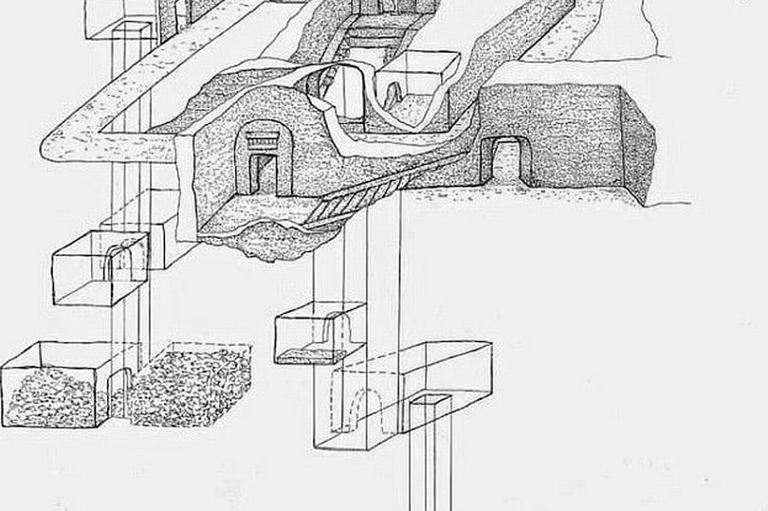Hidden ‘sarcophagus’ discovered by same scientists who found city beneath Egypt’s Giza pyramid

Copyright: Krafe Research project SAR
Recent archaeological discoveries in Egypt have sparked both excitement and skepticism within the scientific community.
A team of Italian and Scottish researchers claims to have uncovered a vast underground city beneath the Giza pyramids, potentially revealing the legendary Halls of Amenti.
Using advanced synthetic aperture radar (SAR) technology, they identified several chamber-like structures within the Khafre Pyramid, one of which contains a sarcophagus previously believed to belong to the pharaoh.
These chambers are reportedly connected by pathways leading to additional subterranean rooms and wells. Notably, eight large vertical structures, possibly wells or shafts, extend over 6,500 feet across and descend approximately 2,000 feet below ground.
However, these findings have been met with skepticism by some experts. Dr. Zahi Hawass, a renowned archaeologist and Egypt’s former Minister of Antiquities, dismissed the claims as “completely wrong” and labeled them “fake news.”
He questioned the validity of the radar techniques used and emphasized the absence of peer-reviewed evidence supporting the discovery.
In contrast, other recent discoveries at the Giza Plateau have been more widely accepted. In March 2023, Egyptian antiquities officials announced the discovery of a hidden internal corridor above the main entrance of the Great Pyramid of Giza.
This nine-meter-long passage was detected using advanced imaging techniques and is believed to have been constructed to redistribute the pyramid’s weight.
These developments underscore the enduring allure and mystery of Egypt’s ancient monuments, as researchers continue to explore and debate the secrets hidden within the sands of time.





